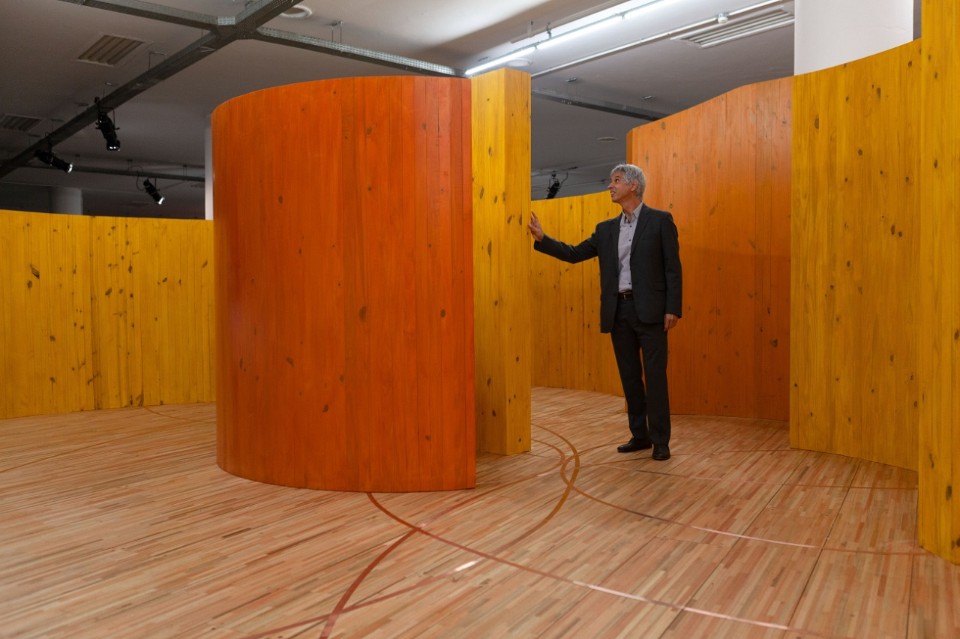Curator Gabriel Pérez-Barreiro, for the 33rd edition of the Bienal de São Paulo, has invited seven different artists to freely organise exhibitions that dialogue with their practices. In the wake of Affective Affinities. A throng and harmonious biennale, a shelter for artists, against the Brazilian critical socio-political situation.
How ‘affective’ (following Mário Pedrosa’s thought) turned out to be the chosen term to define the ‘affinities’ developed between the viewers and artworks? In visual psychology, the field in which Pedrosa studied, the word ‘affect’ means to influence or to change, and Pedrosa’s work is centred on how we are affected by our internal conversations with art. This idea of ‘affect’ is quite different from the way we often think of art: in terms of style, geography, language, etc. I find the concept to be potentially liberating, as it provides a more humanist framework through which to understand art.
I am interested in how an exhibition is perceived differently by each spectator; by the way they create their own affinities with the artworks and ideas presented. This curatorial model allows us to access the affective relations of each artist-curator, who presents their own work against the work of predecessors or contemporary colleagues with whom they feel an affinity.

Compared to a trained curator, do you see the artist as someone who would be particularly more able to create exhibition environments that are more accessible to the audience? I don’t think it is necessarily ‘purer’, but I do think it is different. Artists have been curating their own exhibitions since the 19th century. This was a fundamental activity in the history of modern and contemporary art, from Impressionism, through Surrealism, to the present day. In the last decades, curatorial practice became increasingly more professionalised. I believe the point of view of the artist is as much a curatorial system as a ‘theme’, ‘geography’, ‘chronology’ or any other systems that we are familiar with. I do suspect that artist-curated exhibitions can be more provocative, as the artist can take certain liberties that a professional curator might be more cautious about, but there are as many approaches as there are artists.
In your opinion, how would Affective Affinities reflect, or, maybe the opposite, how it would absorb the complex socio-political scenario that Brazil is going through at the moment? The whole world is going through a complex socio-political situation right now, and I don’t think Brazil is necessarily different from elsewhere. We are clearly in a moment of crisis surrounding the core ideas of truth, democracy, justice, etc. For this edition, I wanted to step back from the immediate topics in the news, and instead prioritise issues around the economy of attention. I believe attention is the greatest political, economic and cultural issue of our time. The ways we perceive reality are changing radically — we have seen devastating examples of this in our everyday lives, for example with social media. Art is one of the few places we can use our attention in a non-instrumental way to question and explore our relations and preconceptions.
The educational material for the 33rd Bienal also focuses on these issues. Instead of introducing information about artworks or suggesting activities, we bring together a series of attention protocols that aim to decelerate the experience of observing, encouraging a certain degree of metacognition and awareness into the process.
I strongly believe that art is political in the extent to which it complicates our understanding of the world, and brings us into contact with subjectivities that we were previously unaware of. That’s how I think a bienal can be helpful right now.

Why did you choose to have a selection of artist-curators, and what were the criteria that led you to gather this particular milieu? I thought it would be interesting to invert the relationship between curator-theme-artist by placing artists at the heart of the project and giving them real autonomy within the curatorial structure, and it is within this context that the 33rd Bienal comprises seven different exhibitions curated by artists alongside twelve solo projects selected by me.
By recognising a long and rich tradition of artists as curators, power is distributed in a more horizontal way, moving away from a single monolithic show to a polyphonic experience, built from multiple exhibitions and sensibilities.
Alejandro Cesarco, Antonio Ballester Moreno, Claudia Fontes, Mamma Andersson, Sofia Borges, Waltercio Caldas and Wura-Natasha Ogunji. What do you see each one of them adding to Affective Affinities via their own selections? Apart from the requirement of displaying their own work, the artist-curators had full autonomy to introduce references that dialogue with their own production. The result is seven totally different exhibitions, each one with their own curatorial rationale and set of interests. I like that each artist-curator developed a different methodology to respond to the original challenge. Some, like Caldas or Andersson, worked primarily with existing works, while others, like Fontes and Ogunji took this as an opportunity to commission new works. I like to think that these are seven different exercises in curating.
Could you please formulate a thought/message that you would hope to stay with those who visit 33th Bienal de São Paulo?I hope that visitors will feel capable of building their own relationships to the many different experiences offered in the bienal.

- Exhibition Title:
- 33a Bienal de São Paulo
- Opening dates:
- From 7 September to 9 December 2018
- Curated by:
- Gabriel Pérez-Barreiro
- Venue:
- Ciccillo Matarazzo Pavilion
- Address:
- Parque Ibirapuera , São Paulo


















